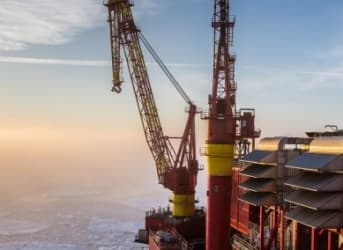It is a dark time to be an investor in the offshore and oil services sector. Norwegian Billionaire and energy pioneer Fred Olsen told Fortune magazine this summer that when he first entered the energy services business decades ago he hoped to strike it rich by providing essential services and products to exploration companies. He drew an analogy with the Yukon gold rush, in which gold prospectors were not the only ones that made a lot of money in the frenzy, but also those people who ran the brothels.
But as Yukon and other gold rush locales saw, when the bonanza stops, the money for an array of service industries also slows to a halt. The same can be said for the oilfield services industry. The oil services sector was built around an expected level of demand for new exploration and drilling and subsequent service needs of the industry. Yet in some respects, offshore oil drilling seems to be stagnating at an incredible rate even as onshore fracking proves more resilient. Related: Day Of Reckoning For U.S. Shale Will Have To Wait
Offshore drilling requires vast amounts of start-up capital and in the absence of a stable oil price that guarantees a profit on that investment over the medium term, many oil companies are better off going for short “surgical” fracking plays that are cheap to start-up but which have only a couple years of significant production life.
That troubling hypothesis saw more evidence in its favor recently when a report from Reuters noted that producers are abandoning field upgrades at the fastest rate in 30 years. These field upgrades are necessary work that helps keep an aging oil field producing oil after it has passed its peak output levels. Without these upgrades, Oslo-based oil consultancy Rystad Energy is forecasting that offshore oil production will fall a whopping 1.5 million barrels per day during the course of 2015. This represents a 10 percent decline in production levels and will take production from 15 million bpd to 13.5 million bpd in the space of year. Related: How To Clean Up The Oceans While Making Alternative Fuels
The lack of maintenance on these fields will actually lead to a permanent decline in not only the supply of oil being produced, but also the stock of oil. Aging fields only make sense to operate because much of the expense in getting them to produce has already been incurred. These sunk costs then do not impact the marginal decision to keep producing from the field. However, once an oil company stops investing in field maintenance and, as a result, sees oil flow out of the ground at a slower rate, the overall useful life of the field is shortened.
Once a firm decides to leave a field, even if there is still some small amount of oil in the ground, it is highly unlikely that the field will ever be worth returning to. Related: Statoil Uses New Method To Wring More Gas From North Sea
This decline in oil supply will help prices recover over time. To put the magnitude of the decline here in perspective – that 1.5 million bpd of production is likely equal to what Iran can realistically bring online in the next two years. In other words, offshore oil drilling cuts alone will offset Iran’s entire increase in production.
This might be good news for oil producers themselves, but it’s bad news for offshore drillers and servicing companies. The bleak outlook in the sector has not gotten much better of late. Many of the stocks themselves may be trading at very reasonable prices that reflect a very pessimistic outlook, but from a business standpoint it is very hard to get excited about any possibility of a quick rebound in offshore services profits.
By Michael McDonald of Oilprice.com
ADVERTISEMENT
More Top Reads From Oilprice.com:
- Silver Linings For Energy Sector In Canada With New Liberal Government
- Statoil’s North Sea Success Provides Hope For World’s Depleted Fields
- Oil Glut Appears To Be Getting Worse, Not Better


















